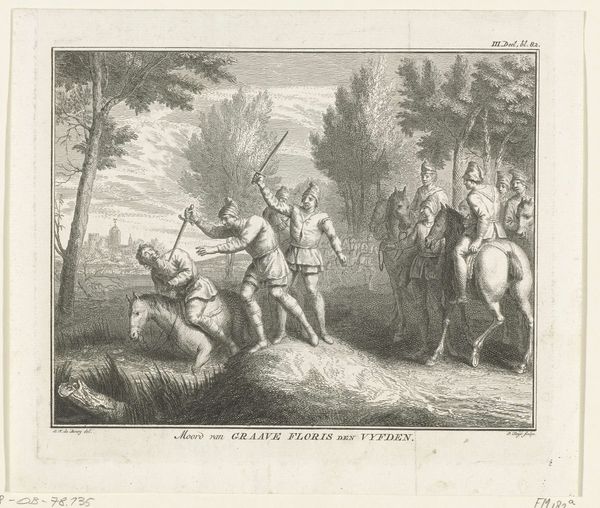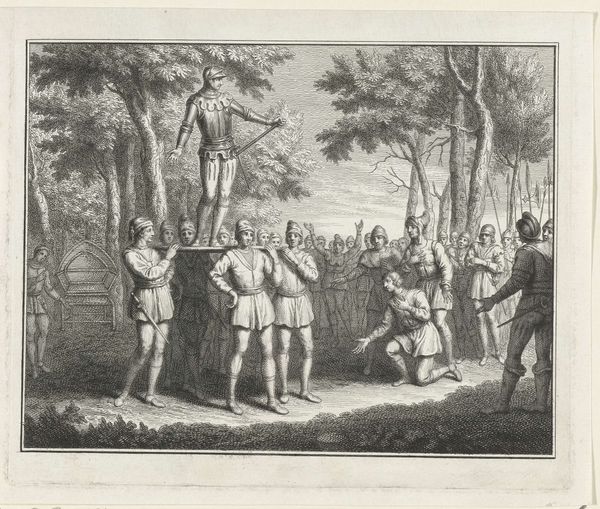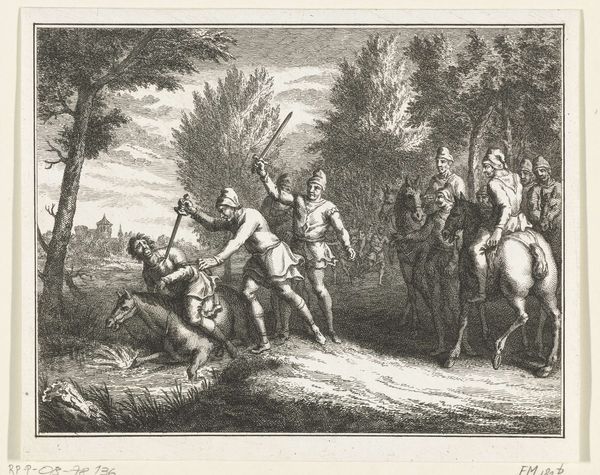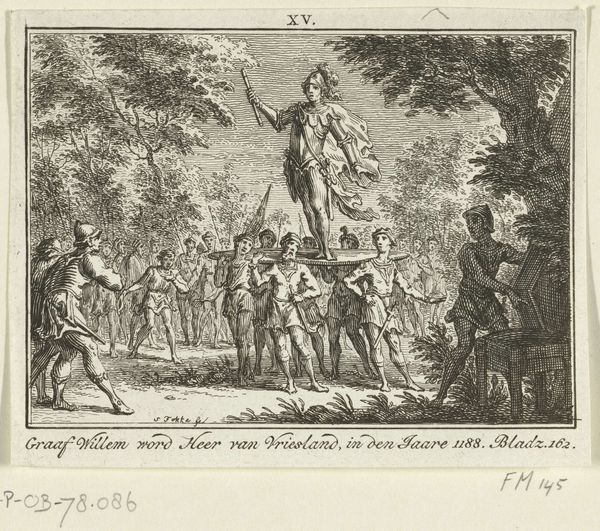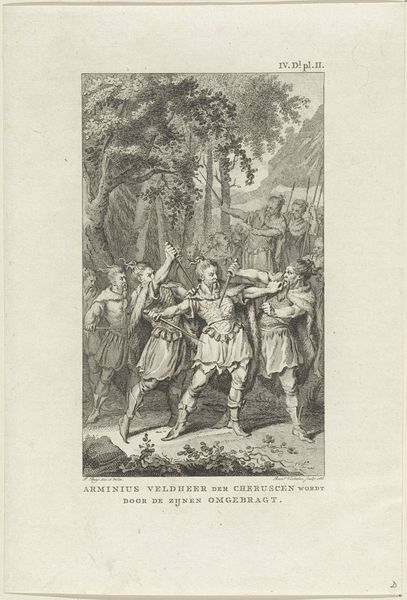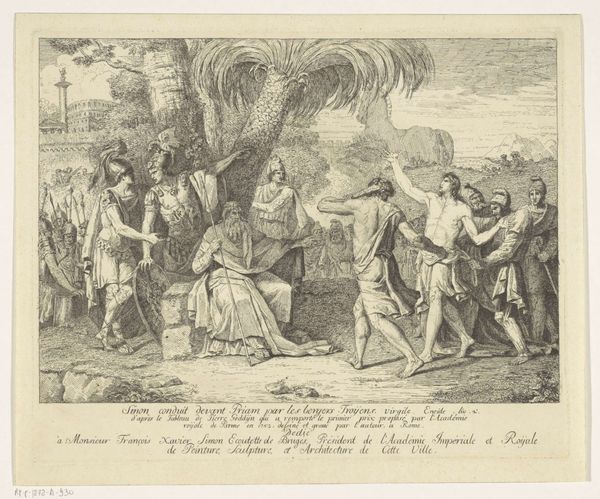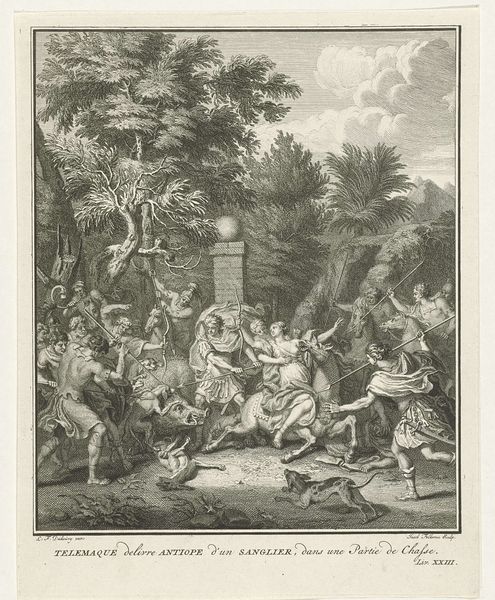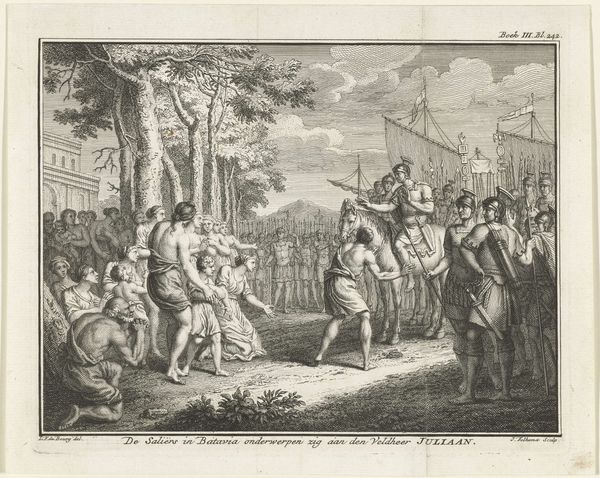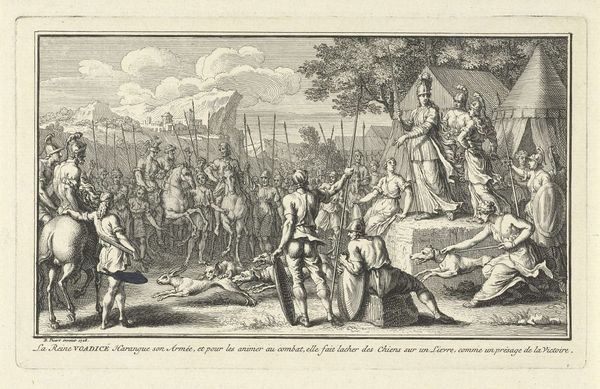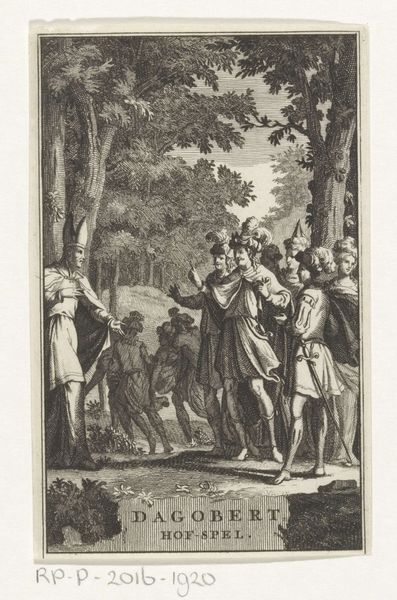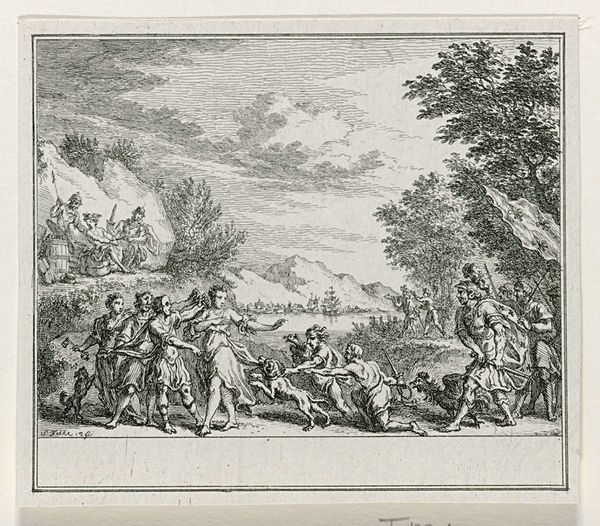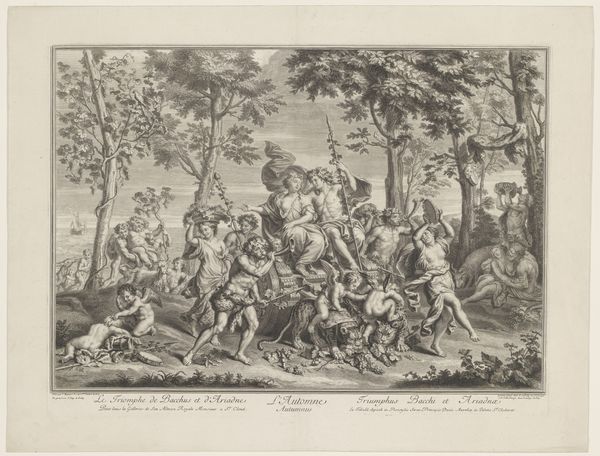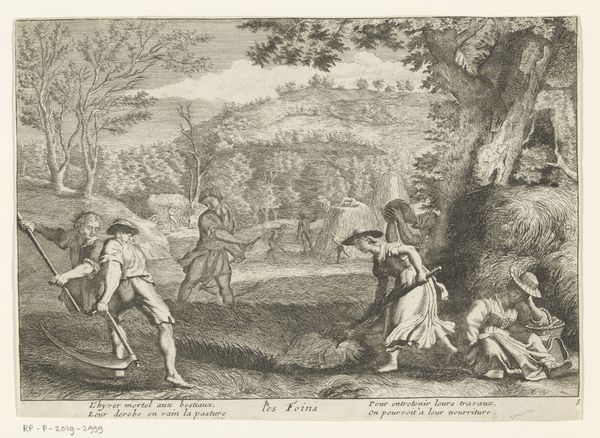
print, engraving
#
baroque
#
pen drawing
# print
#
genre-painting
#
history-painting
#
engraving
Dimensions: height 165 mm, width 205 mm
Copyright: Rijks Museum: Open Domain
Curator: Here we see Jacob Folkema's print, “De Fries Galama verdedigt zich tegen graaf Floris II,” created between 1749 and 1759. Immediately striking, wouldn’t you say? Editor: It certainly grabs your attention, like a well-staged theater scene frozen in time. The flurry of activity and the contrasting light create a strong sense of drama. Are these dense marks a printed engraving? Curator: Precisely. Note the artist’s attention to rendering depth and movement, creating the spectacle so appreciated in Baroque aesthetics. Think of the symbolic weight inherent in portraying such a defiant act—a lone man standing against power. Editor: That defiance is palpable. The medium reinforces this with its own history as an accessible method of information distribution, in contrast to the expensive craftmanship often favored for the elite's visual displays. Who would have this artwork originally reached, and why was this a subject deemed suitable for printmaking? Curator: Consider how Galama becomes a figure for local resilience and independence, a cultural ideal presented and popularized to the public by printed matter. These historical clashes are rife with such symbolism. Folkema draws not merely a physical fight but a symbolic contest of will. Note, for instance, Galama’s steady stance amidst chaos. Editor: I am fascinated by what looks like a collaboration with other artists. I also appreciate how printmaking allows such wide access, and question the narrative around heroic defense of freedom that it is often connected to. The level of labour, and accessibility makes it intriguing, regardless of what statement is intended by the artist, Folkema. The production means affect the overall impression as it highlights not necessarily only individual act, but potentially a wide societal movement. Curator: A collaborative endeavor, and such wide dissemination definitely shift the narrative. Seeing through a material lens surely deepens our understanding of the piece and the layers of intent involved in its production. Editor: Absolutely. And understanding material accessibility allows us to move toward the history of images, objects, and ideologies circulating among populations. Curator: This really gives new understanding, doesn't it? Seeing the history, struggle, and symbolic weight conveyed through something like an engraving.
Comments
No comments
Be the first to comment and join the conversation on the ultimate creative platform.

